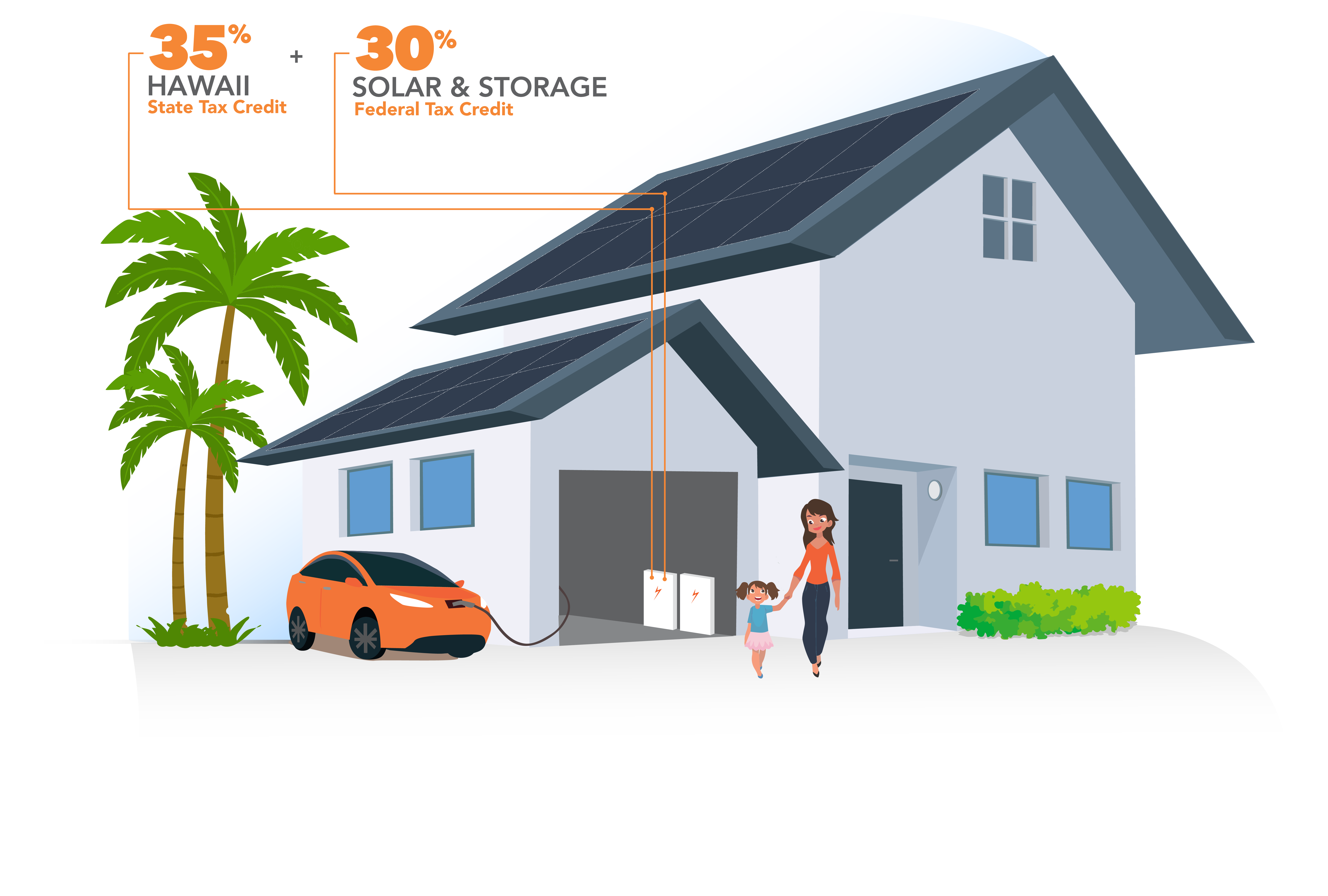Hawaii State & Federal Solar Tax Credits
Learn about the tax benefits of solar.
Solar Tax Credits
With Hawaii State tax credit set at 35% and the federal solar Investment Tax Credit (ITC) expanded to 30%, there is no better time to go solar than now!
In August 2022, Congress passed an extension of the ITC, raising it to 30% for solar installations for 10 years, from 2022-2032. (Systems installed on or before December 31, 2019 are also eligible for a 30% tax credit.)
Read below to learn more about what the tax credits are, how to claim your credits and any upcoming changes.


Residential Hawaii State energy tax credit
Originally enacted in 1976, the Hawaii Energy Tax Credit allows individuals to claim an income tax credit of as much as 35% of the cost of equipment and installation of a residential photovoltaic (PV) system. The credit is capped at $5,000 per “5 kW system,” and multiple systems may be installed on one home.
Systems must be fully installed and capable of operation by the end of the the year in which you are claiming the tax credit. If your credit is more than what you owe in that year, the credits may be rolled forward to subsequent years. Hawaii also offers a “refundable credit” for PV system owners who do not have sufficient state tax liability; the refundable credit is 30% less than the normal tax credit, but state cuts a check directly to the system owner.









